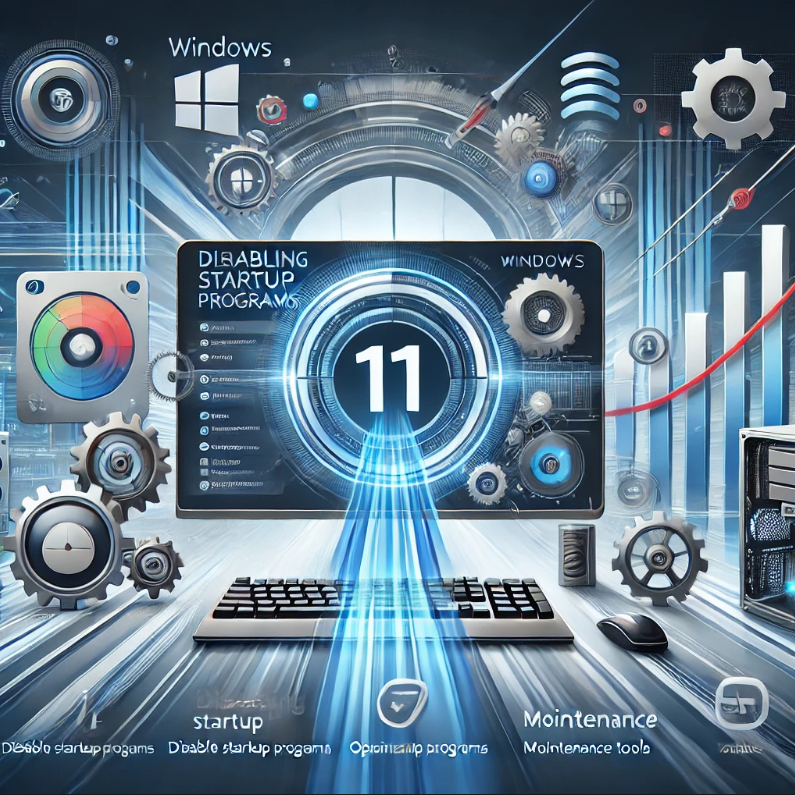
Windows 11 is known for being faster than its predecessor, Windows 10, but there’s always room for improvement. By following these simple steps, you can further enhance your PC’s performance and stability.
Note: These steps are based on Windows 11 version 22H2. Some features may vary slightly if you’re using an earlier version.
1. Disable Unnecessary Startup Programs One common cause of a slow Windows 11 PC is unnecessary programs running in the background. Many of these programs start automatically when you boot your system, using up valuable resources.
To disable these, open Task Manager by pressing Ctrl + Shift + Esc, or by searching for “Task Manager” in the Windows search bar. Once Task Manager is open, click the Startup tab to view a list of programs that run when Windows starts.
Review the list and identify programs you don’t need at startup. To disable them, right-click on the program and select Disable. This won’t remove the program from your computer; it just prevents it from launching during startup.
If you’re worried about one of the listed applications, you can go to a site run by Reason Software called “Should I Block It? 1” and search for the file name. You’ll usually find very solid information about the program or service.
2. Enable Efficiency Mode Windows 11 includes an Efficiency Mode, introduced in version 22H2, designed to improve performance by reducing the resource consumption of background processes. It’s a handy tool for speeding up your computer, especially when using resource-heavy apps.
Open Task Manager and navigate to the Processes tab. Select the app or process you want to optimize, then click Efficiency Mode from the top-right of the Task Manager window. Note that some processes may already be running in Efficiency Mode by default, and this feature may not be available for all apps.
3. Use Windows Automatic Maintenance Windows 11 runs background maintenance tasks like security scans and system diagnostics, but these tasks may not be running if your PC is off or unplugged at the scheduled time.
To ensure automatic maintenance is enabled and running regularly, search for “Control Panel” in the Windows search bar. Then, go to System and Security > Security and Maintenance. In the Maintenance section, click Start Maintenance or Change maintenance settings to schedule it at a convenient time. Make sure to check the box that allows scheduled maintenance to wake up your computer.
4. Remove Adware and Bloatware Unnecessary software, such as adware or bloatware, can significantly slow down your PC. Manufacturers often install these programs by default, but they use system resources in the background without your knowledge.
Start by running a full system scan using Windows Defender or another antivirus software to remove any malware or adware. You can also use tools like Malwarebytes for additional protection. Afterward, uninstall any bloatware using a tool like Bulk Crap Uninstaller, or visit websites such as “Should I Remove It?” to check whether a program is safe to uninstall.
5. Disable Search Indexing While Windows 11’s search feature is fast due to background indexing, it can slow down PCs with limited resources. Turning off search indexing can boost performance, especially if you’re using an older or slower machine.
To disable indexing, press Windows + R, type services.msc, and press Enter. In the Services window, scroll down to Windows Search, right-click, and select Stop. If you’d rather disable indexing for specific folders, go to Indexing Options in Control Panel, click Modify, and uncheck the folders you want to exclude from indexing.
6. Clean Up Your Hard Drive with Storage Sense A cluttered hard drive can cause your PC to slow down. Windows 11’s Storage Sense feature automatically deletes unneeded files, such as temporary files, old downloads, and Recycle Bin contents.
Enable Storage Sense by going to Settings > System > Storage, then turn on Storage Sense. You can further customize how often Storage Sense runs and what files it deletes by clicking the arrow next to the toggle and adjusting the settings.